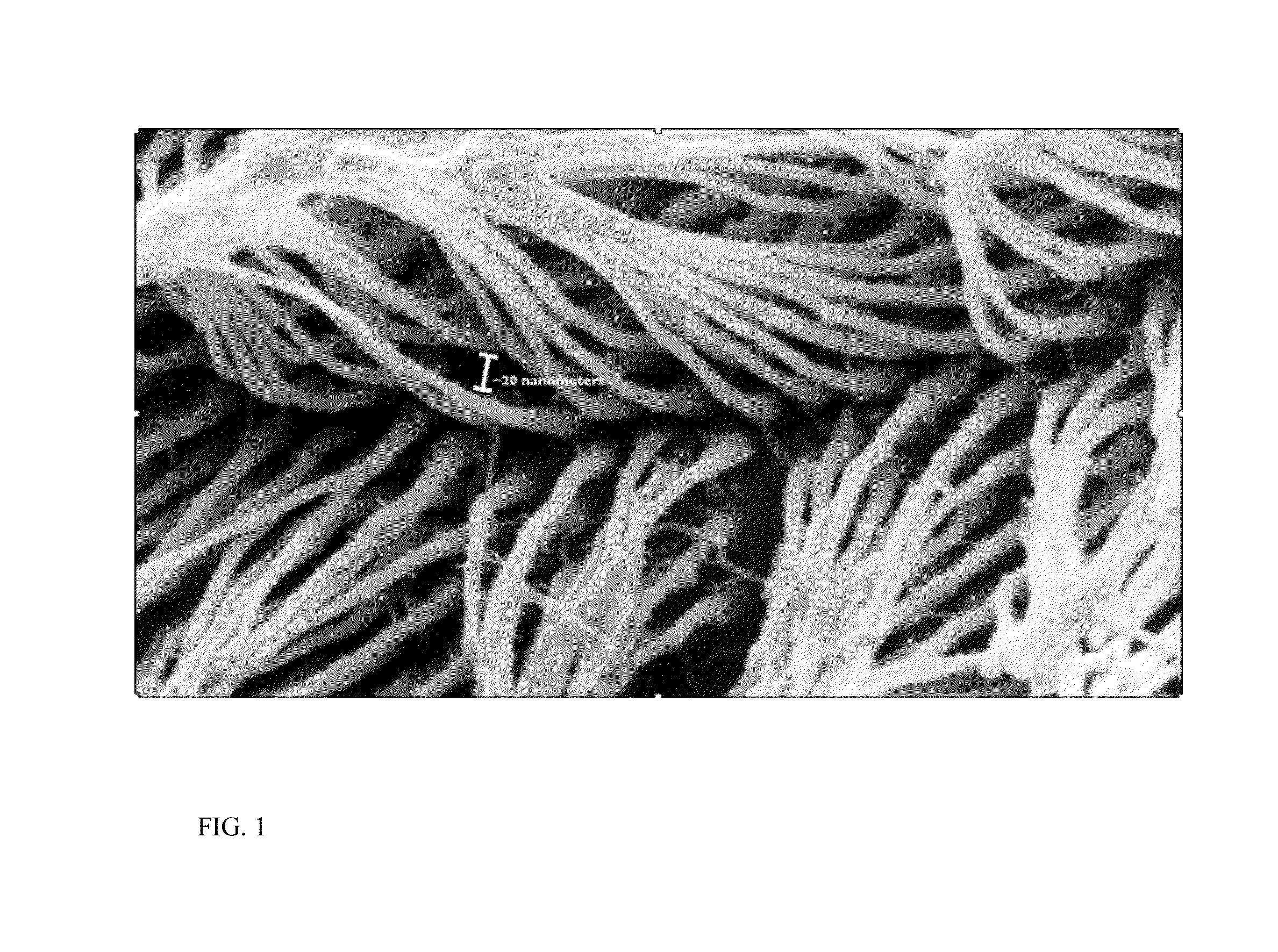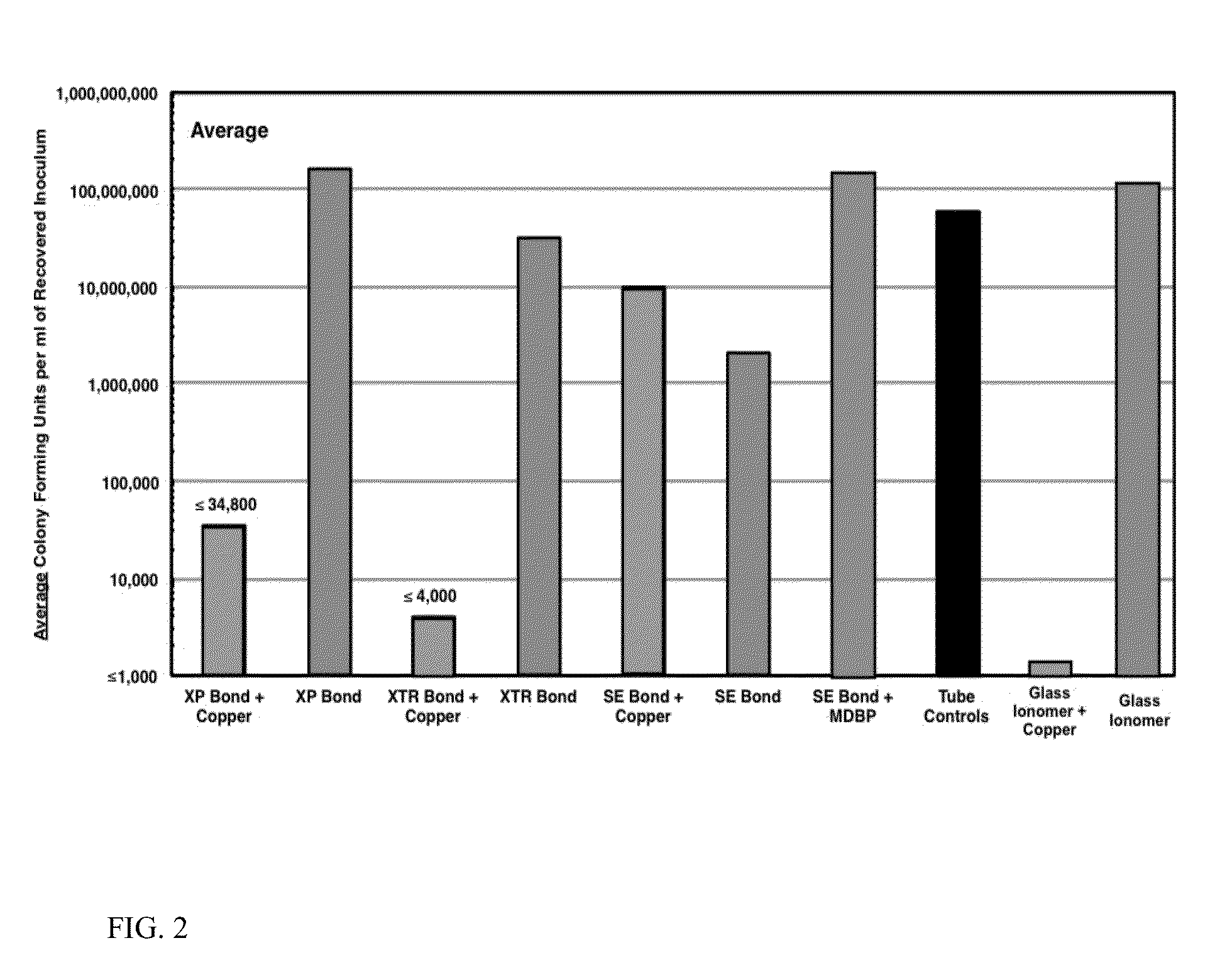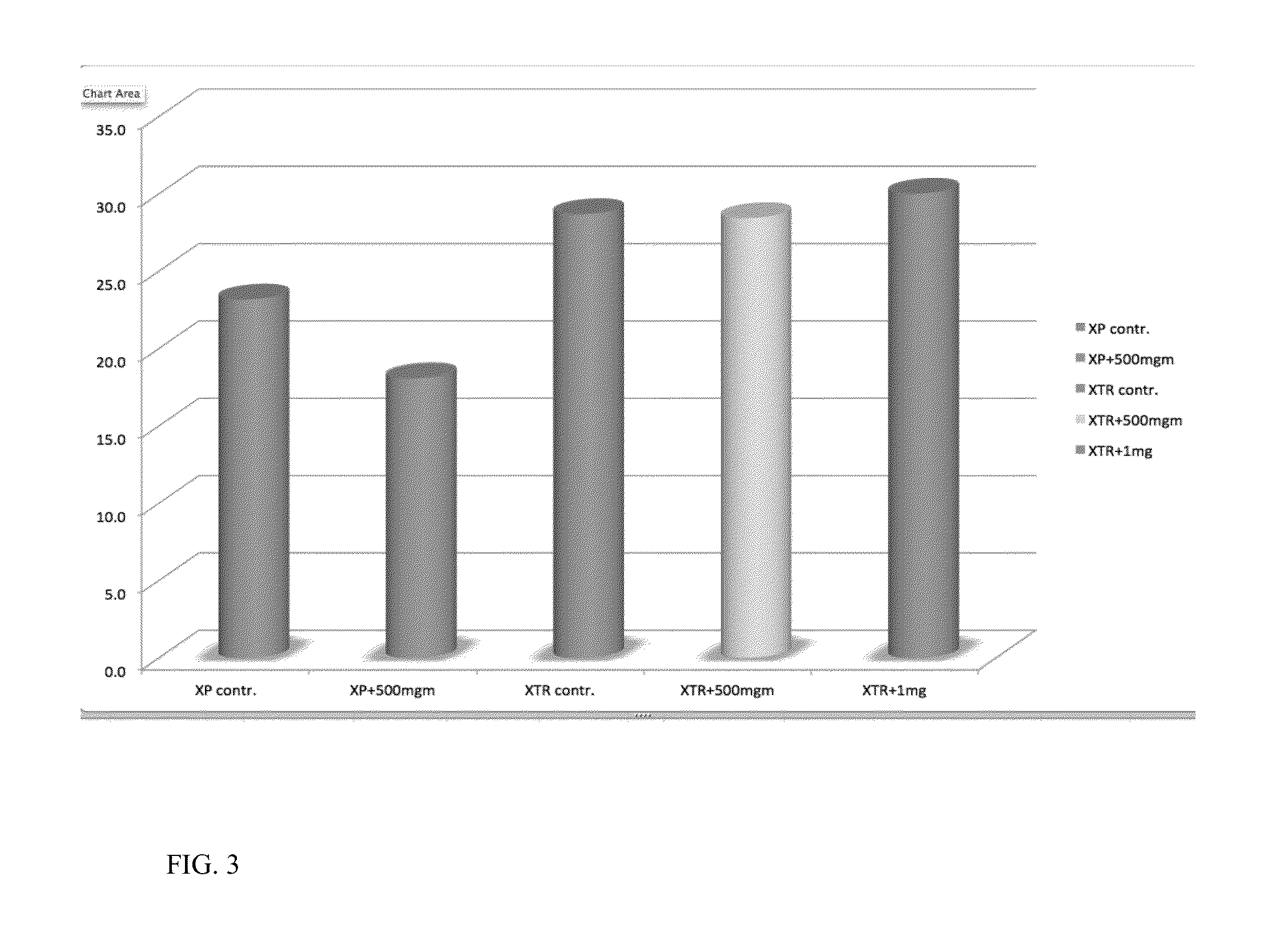NOVEL BACTERIOSTATIC AND ANTI-COLLAGENOLYTIC DENTAL MATERIALS THROUGH THE INCORPORATION OF POLYACRYLIC ACID MODIFIED CuQ NANOPARTICLES
- Summary
- Abstract
- Description
- Claims
- Application Information
AI Technical Summary
Benefits of technology
Problems solved by technology
Method used
Image
Examples
example 1
Dental Materials Containing CuQ Iodide Nanoparticles
[0268]The inventors have successfully produced dental materials containing copper iodide nanoparticles and have shown the material to maintain the esthetics, rheology and adhesive capabilities of the unaltered materials while providing an antimicrobial affect. Furthermore, the adhesive resin and glass ionomer with copper iodide nanoparticles was 7 orders of magnitude more antimicrobial than the current material marketed as being antimicrobial. These results are shown in FIG. 2. As shown, when the experimental CuQ nanoparticle containing adhesive resin was tested against MDPB containing adhesive resins it was found to be significantly more efficacious at killing and preventing growth of caries related bacteria. In addition, FIG. 3 shows the bond strength of the copper modified adhesive materials is unaltered from that of the controls.
[0269]While this invention has been described in conjunction with the various exemplary embodiments ...
example 2
Synthesis of PAA Coated CuQ Oxide Nanoparticles
[0270]Copper Oxide Nanoparticle Synthesis: A stock solution of 120 ppm copper solution is made by first dissolving 12 mg Cu2O completely in 10 mL NH4OH before diluting with 90 mL of ultrapure 18 Ω H2O. In a 20 mL scintillation vial, 10 mL of the 120 ppm copper stock solution and 50 μL of a 1% (w / w) PAA were added. In a separate 1 dr vial, 2 mg NaBH4 was dissolved in 2.5 mL H2O and sonicated briefly to mix before injecting 2 mL of the NaBH4 solution directly into the copper solution. The vial was capped and swirled until it turned a uniform light yellow or yellow-brown. It was allowed to age for 1 hour until it turns a deep red color. The solution was then bubbled with N2 gas until all of the NH4OH has been removed. The vial was capped quickly to prevent the least amount of air from entering the vial.
example 3
Synthesis of PAA Coated CuQ Iodide Nanoparticles
[0271]Copper Iodide Particle Synthesis: In an Erlenmeyer flask, 78.8 mL of 0.2M copper (copper (II) sulfate) and 7.8 mL of 20% (w / w) PAA was mixed. Then 100 mL of 0.4M iodide (potassium iodide) was added to the flask and thoroughly mixed producing a white powder. An additional 50 mL of 0.4M iodide solution was added to complete the reaction. The powder was washed with water by centrifugation four times before drying in a vacuum oven at 50° C.
PUM
| Property | Measurement | Unit |
|---|---|---|
| Diameter | aaaaa | aaaaa |
| Size | aaaaa | aaaaa |
| Volume | aaaaa | aaaaa |
Abstract
Description
Claims
Application Information
 Login to View More
Login to View More - R&D
- Intellectual Property
- Life Sciences
- Materials
- Tech Scout
- Unparalleled Data Quality
- Higher Quality Content
- 60% Fewer Hallucinations
Browse by: Latest US Patents, China's latest patents, Technical Efficacy Thesaurus, Application Domain, Technology Topic, Popular Technical Reports.
© 2025 PatSnap. All rights reserved.Legal|Privacy policy|Modern Slavery Act Transparency Statement|Sitemap|About US| Contact US: help@patsnap.com



